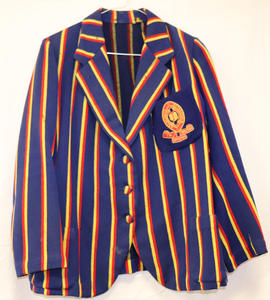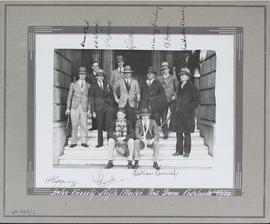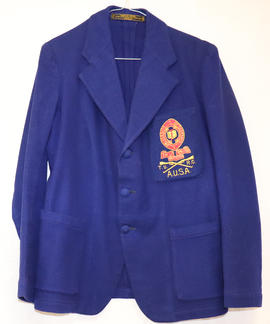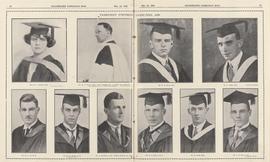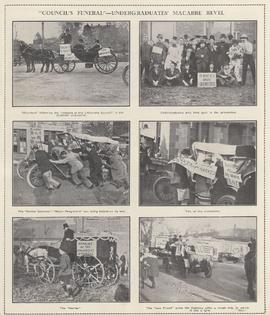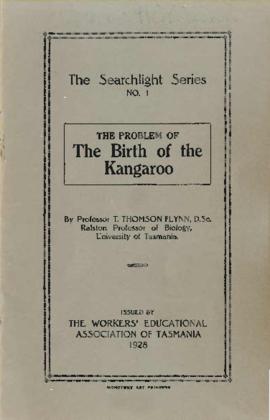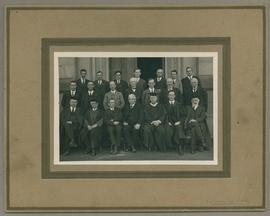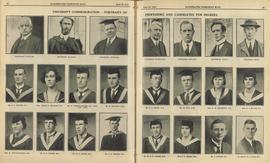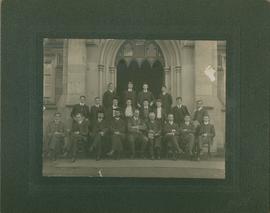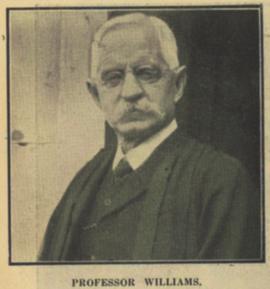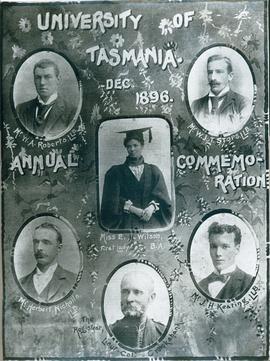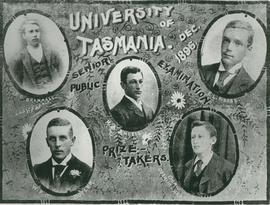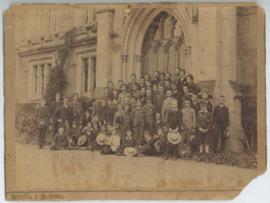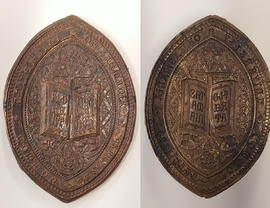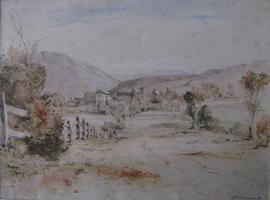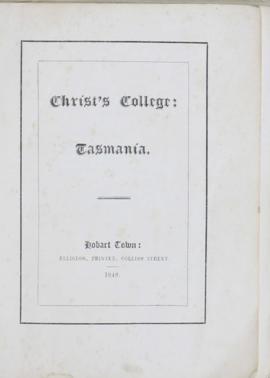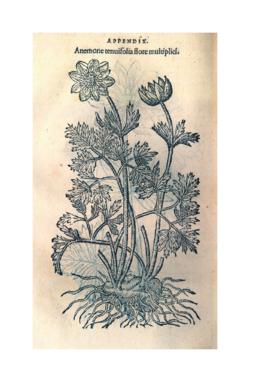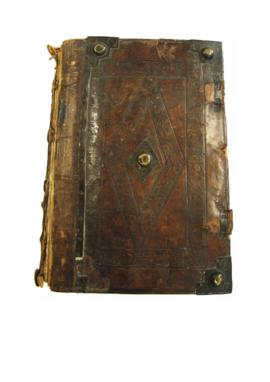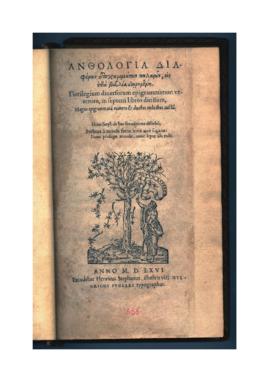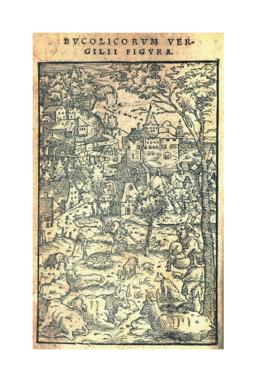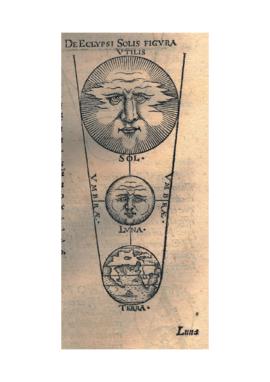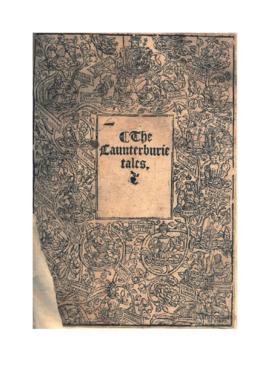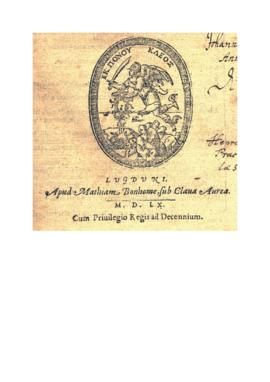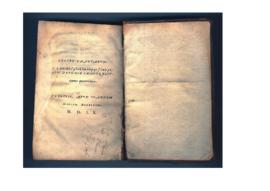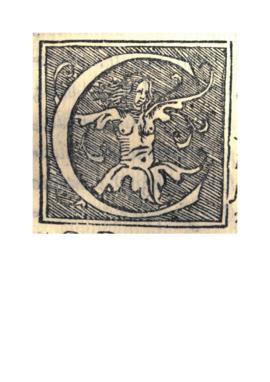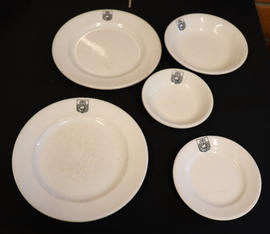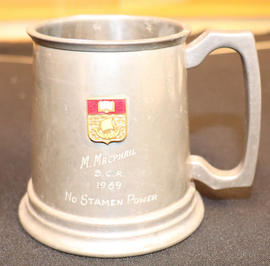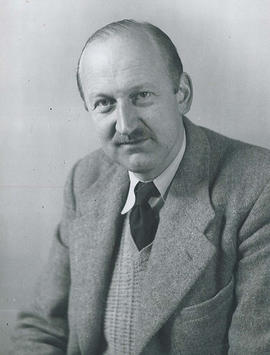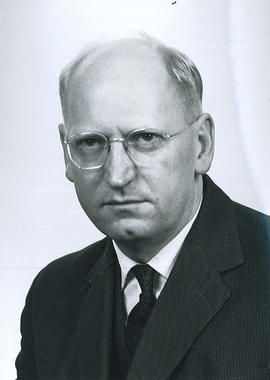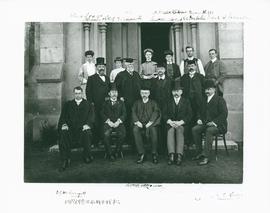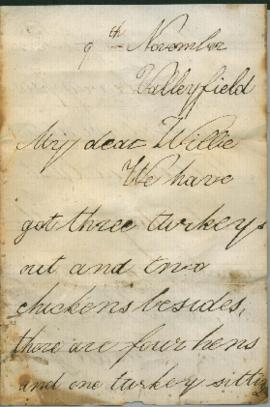Virgil, Opera, incl. Appendix Vergiliana, with the notes of Iohannes Frisius, Philip Melancthon et al.
Binding 16th- or 17th-cent., the leather lost, only the pasteboard, damaged by damp, remaining.
Pr. Weigand Han Erb., Sigmund Feierabent, Georg Rab, [Frankfurt], 1563.
Fine full-page engravings, verso of a8, c4, i8, l5, n4 verso, p2 verso, q8 verso, x3, z3, B1 verso, D1 verso, F3, H4 verso, K7.
Inside the front board ‘T. Blyth’s’. The first flyleaf is filled with pen-trials, the verso and following recto with a draft letter, 16th-cent., in English. The same hand writes more of the same on the innermost end flyleaf. At the head of the verso of the title page a 16th-cent. name, ‘Richardus Lath[?]nage’, has been cropped by the binder. The same name is written lower down, inked over. On the verso before b1 is ‘Thomas Tatham 1717’. On the verso of the last flyleaf ‘Mr William Radcliffe’, presumably the Derbyshire cotton weaver of this name (1761-1842). From the Library of Christ College.
Uncatalogued.



